Gobi Paratha is a widely popular Indian breakfast. Here is a flavoursome Punjabi-style stuffed paratha recipe with a homemade masala.
Jump to:
What is Gobi Paratha?
Gobi Paratha is a vegan whole wheat flatbread stuffed with cauliflower commonly enjoyed for breakfast, lunch, or dinner in Northern India. This stuffed paratha has transcended regional boundaries to become a staple in households and restaurants.
Gobi is the Hindi term for cauliflower. The word paratha defines the crisp, pan-fried, Indian flatbread.
Anatomy of Gobi Paratha
There are two components in the making of Gobi Ka Paratha:
- Cauliflower (Gobi) Stuffing
- Paratha Dough for the outer layer
The cauliflower is finely grated and combined with homemade paratha masala, salt, green chillies, ginger, and coriander. The cauliflower stuffing for paratha does not require cooking.
Whole wheat flour, water, and a pinch of salt are kneaded together to form a smooth, pliable dough. This dough is then divided into small balls and rolled out into discs, ready to envelop the cauliflower filling.
The cauliflower mixture is generously spooned onto the centre of each dough disc before being sealed and rolled out into a thin, round paratha.
These stuffed flatbreads are cooked on a griddle or tawa, brushed with ghee or oil and cooked until golden brown on both sides.
Ingredients For Cauliflower Stuffing
- Cauliflower florets fresh or frozen
- Ajwain (carom seeds) help in digesting the cauliflower.
- Herbs: Green Onion, Coriander, Ginger, Green Chilli
- Seasoning: Salt and Paratha Masala
Punjabi Paratha Masala: You can use the readymade paratha masala or follow my recipe to make it from scratch at home.
- Dry roast red chilli, black peppercorns, coriander seeds, cumin seeds, and Kasuri methi until aromatic.
- Grind to a coarse powder. Add this masala to a variety of paratha stuffings for flavour and aroma.
How To Make Paratha Stuffing
Prepare Cauliflower
- Rinse the cauliflower and pat dry with a clean kitchen towel.
- Grate the cauliflower in a food processor or using a manual grater.
- Transfer grated cauliflower to a bowl.
- Combine salt and grated cauliflower.
- Keep it aside covered for 20 minutes.
- After 20 minutes squeeze out all the excess water from cauliflower.
Season Cauliflower
- Add paratha masala, remaining salt, green onion, ginger, chilli, coriander, and ajwain. Mix nicely.
- Gobi Paratha stuffing is ready to use.
How To Assemble Gobi Paratha
Prepare Dough
- Combine whole wheat flour and a pinch of salt. Use water to form a smooth dough.
- Now knead the dough for the paratha. Knead the dough for 5 – 10 minutes. Cover the dough and set aside.
- The dough for the Gobi Paratha is similar to that for Phulka/Chapati.
Assemble Paratha
- Take a medium sized ball from the dough.
- Roll out a small disc about 3 inches in diameter from the dough ball.
- Add a big tablespoon of the cauliflower masala to the centre of the rolled-out disc. Be careful not to understuff or overstuff the paratha.
- Bring the edges of the dough, join them and flatten them.
- Now roll the stuffed parathas gently to the size of a chapati or roti.
Cook Gobi Paratha
- Cook the gobi paratha on a preheated griddle by smearing a teaspoon of ghee/oil till browned and uniformly roasted on both sides.
- The key lies in achieving the perfect balance of crispiness and even cooking.
Serving Suggestion
Whether enjoyed as a hearty breakfast, a wholesome lunch, or a comforting dinner, Gobi Paratha never fails to delight with its rustic charm and irresistible taste.
Gobi Paratha is best enjoyed fresh off the tawa, piping hot with a bowl of creamy curd or yoghurt, a spicy Indian pickle, or a dollop of homemade white butter to add layers of taste and texture to each bite of paratha.
For those looking to indulge further, a side of masala chai or a refreshing lassi provides the perfect balance to the richness of the paratha.
My Tried and True Tips
- Squeeze Out Water properly from salted cauliflower otherwise, you will end up with watery stuffing which will stick to the dough while rolling out the paratha.
- Do Not Overstuff. The stuffing will come out from the edges of the paratha and it will become difficult to roll them.
- Roll Out Gently. Do not apply too much pressure while rolling out a stuffed paratha. So when rolling the gobi paratha, try to roll evenly with gentle pressure.
- Preheat Tawa. Ensure your tawa/griddle on which you will be making the paratha is hot before you place the paratha on it. If it’s just medium hot, the paratha might stick to it and also, take time to cook.
- Kneading a soft dough is the key to making the softest paratha.
Storing and Freezing
Leftovers: You can store the leftover cooked paratha in a hot case or an airtight container packed with aluminium foil or butter paper. Reheat on a griddle or microwave.
Freezing: I do not recommend freezing gobi paratha as cauliflower might start spoiling and smelling in the freezer.
Meal-Prep: Another approach is to half-cook the gobi paratha without applying oil and store it for a day or travelling. Heat a pan and cook the paratha on one side long enough to see the colour of the paratha change on top. When that happens, remove the paratha and keep it on the side to cool down. Stack the parathas with wax papers in between each paratha and since these aren’t delicate, you can directly put them in a ziplock bag and store them in the refrigerator.
More Indian Paratha Recipe
follow us on Youtube and Instagram for video recipes.
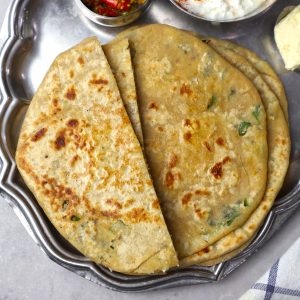
Gobi Paratha Recipe
- Tawa/Griddle
Ingredients
Ingredients For Paratha Stuffing
- 1 small size cauliflower
- 1 inch piece of ginger, finely chopped amchur
- 1 green chilli, finely chopped
- Handful coriander leaves, finely chopped
- 4 sprigs spring onion greens, finely chopped
- 1 ¼ teaspoon cooking salt or to taste
- 1 teaspoon paratha masala (see Note 1)
- ½ teaspoon carom seeds (ajwain)
Ingredients for the dough
- 2 Cup whole wheat flour
- Water to knead the dough
- ¼ teaspoon salt or to taste
- Oil to cook the paratha (see Note 2)
Instructions
Prepare Dough
- Combine whole wheat flour and a pinch of salt. Use water to form a smooth dough. Now knead the dough for the paratha. Knead the dough for 5 – 10 minutes. Cover the dough and set aside to rest.
- The dough for the Gobi Paratha is similar to that for Phulka/Chapati.
Prepare Paratha Stuffing
- Rinse the cauliflower and pat dry with a clean kitchen towel. Grate the cauliflower in a food processor or using a manual grater.
- Combine 1 teaspoon of salt and grated cauliflower. Keep it aside covered for 20 minutes. After 20 minutes squeeze out all the excess water from cauliflower.
- Add paratha masala, remaining salt, green onion, ginger, chilli, coriander, and ajwain. Mix nicely. Gobi Paratha stuffing is ready to use.
Prepare Gobi Paratha
- To make the Gobi Paratha, heat a griddle or tawa over medium heat.
- Take a medium size ball from the dough. Roll out a small disc about 3 inches in diameter from the dough ball.
- Add a big tablespoon of the cauliflower masala to the centre of the rolled-out disc. Be careful not to understuff or overstuff the paratha.
- Bring the edges of the dough, join them and flatten them. Now roll the stuffed parathas gently to the size of a chapati or roti.
- Cook the gobi paratha on a preheated griddle by smearing a teaspoon of ghee/oil till browned and uniformly roasted on both sides.
- Serve Gobi Paratha warm with curd, pickle and white butter.
Recipe Notes:
- Dry roast red chilli, black peppercorns, coriander seeds, cumin seeds, and Kasuri methi until aromatic.
- Grind to a coarse powder. Add this masala to a variety of paratha stuffings for flavour and aroma.

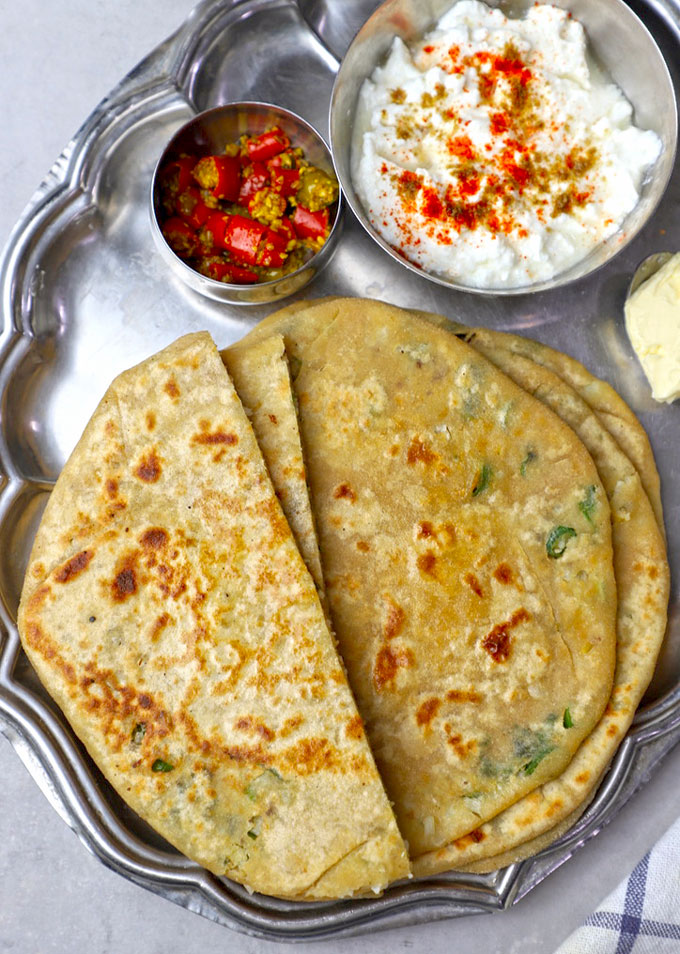
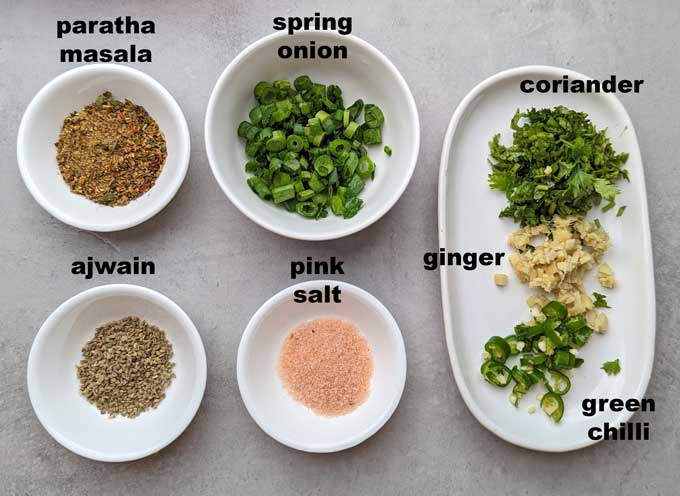
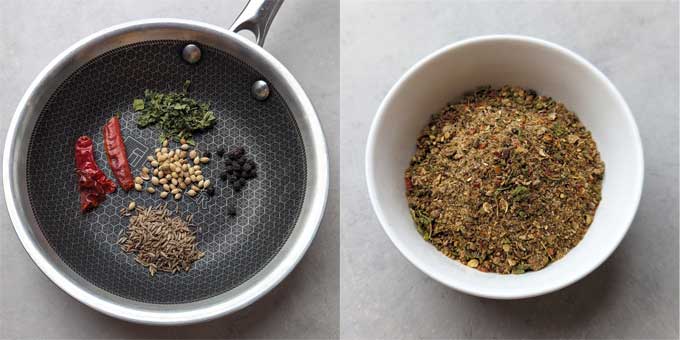
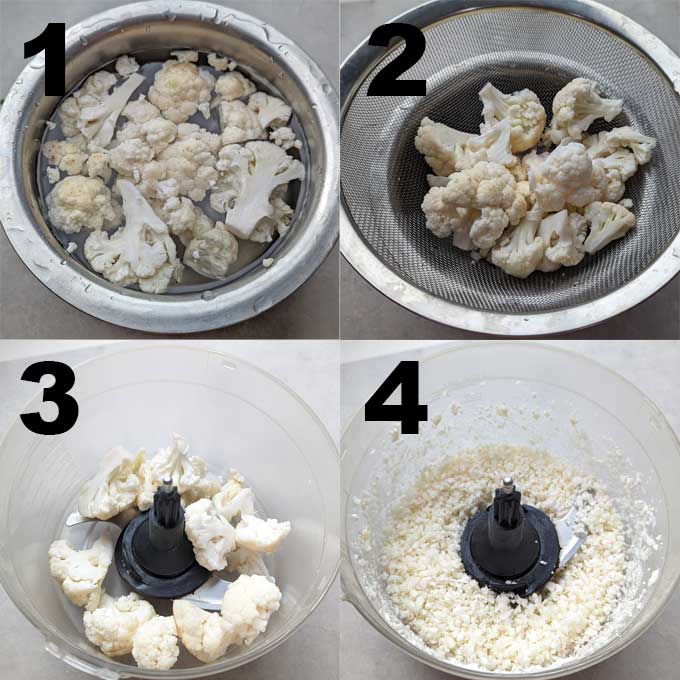
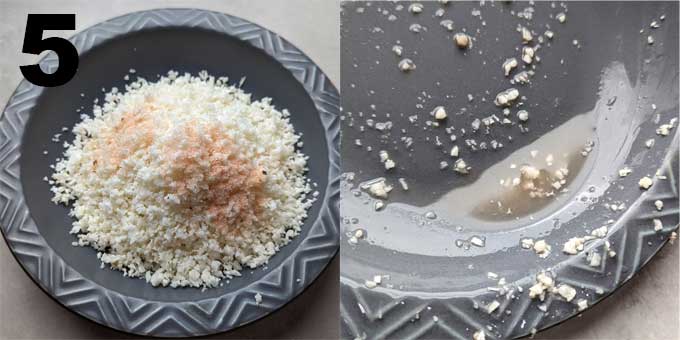
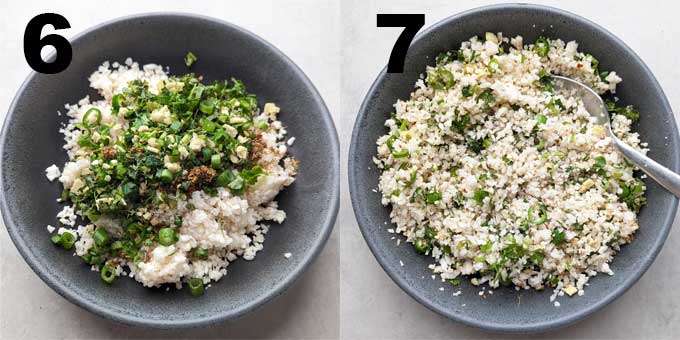
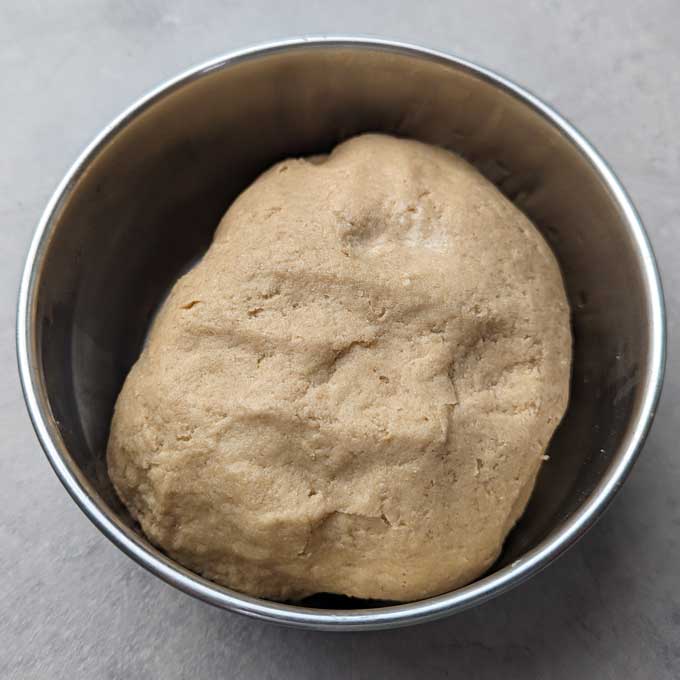
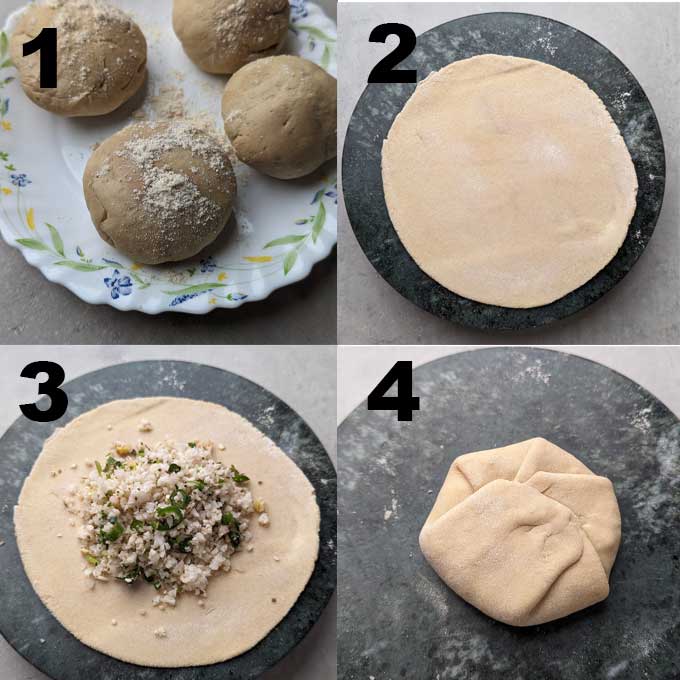
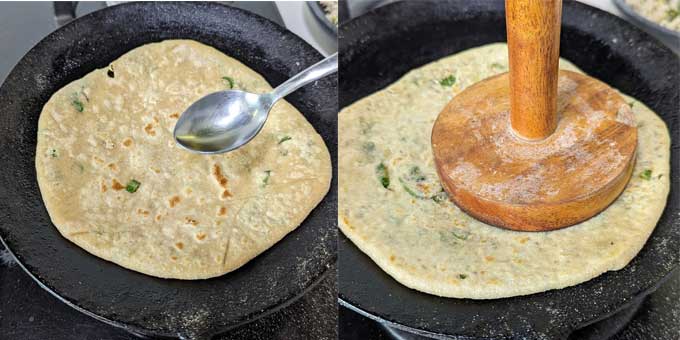
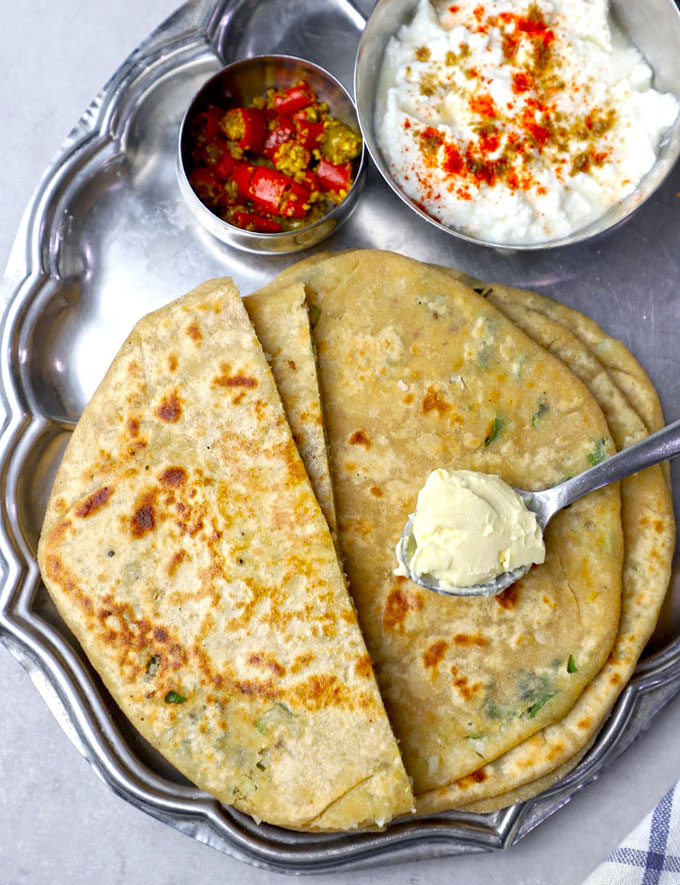
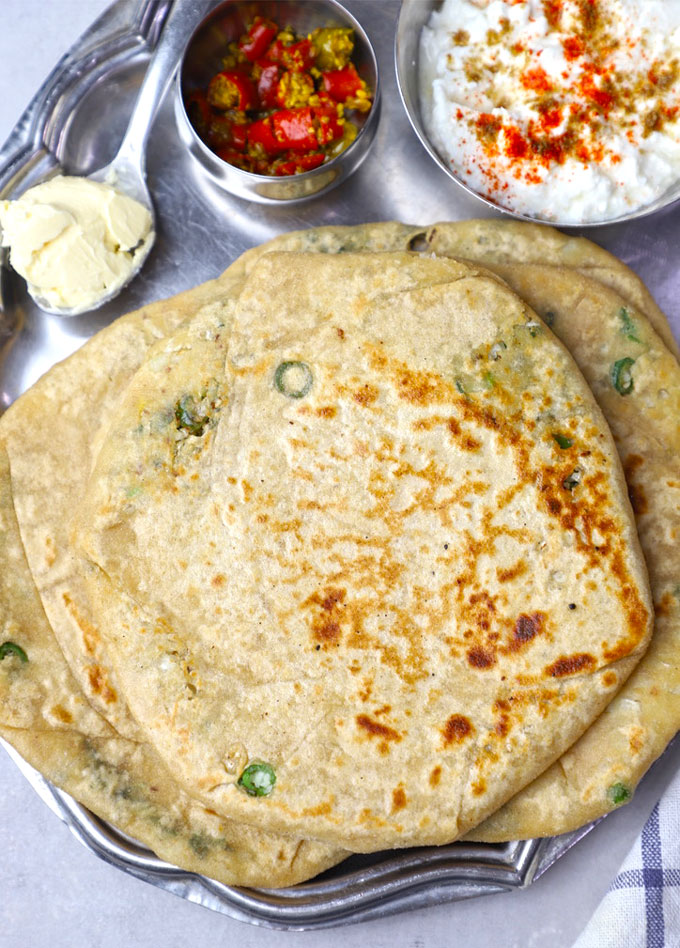
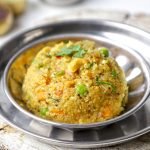
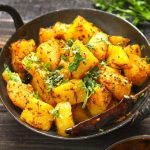
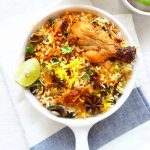
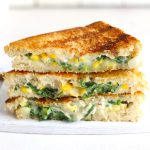
CyberKID says
Mouth watering recipe! I’m missing the cauliflowers. They are really expensive and tasteless. They’ll be available in the winters.